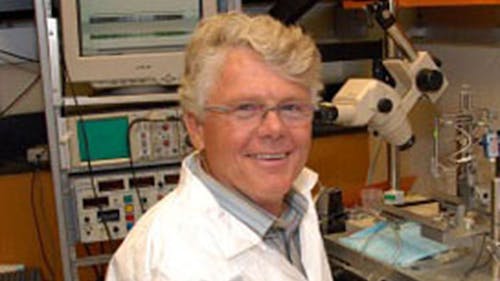Rutgers researchers link cocaine addiction with certain neurons

Rutgers researchers have discovered a link between cocaine addiction and a specific set of neurons, which indicates a potential therapeutic treatment for drug addiction.
In his findings, Morgan James, lead author of the study and a postdoctoral research fellow at the Rutgers Brain Health Institute (BHI), and his team discovered that the use of antagonists — drugs that block nerves from signaling — blocked orexin neurons from signaling when exposed to cocaine. Highly addicted rats were very sensitive to these antagonists, indicating that such chemical blockers may prove to be an effective treatment for addicts.
This discovery has important implications for pharmaceutical therapy for addiction, James said. An antagonist called Belsomra, which is currently used to treat insomnia by targeting orexin receptors, could be repurposed to treat addiction as well.
When he started his research, James found that simulating human addiction in rats enabled researchers to study the neurological impact of cocaine and how to potentially reverse this change.
Gary Aston-Jones, director of the BHI and co-author of the study, said that orexin neurons, which comprise a small region in the hypothalamus responsible for transmitting the orexin neuropeptide and are associated with sleep and reward, were first associated with cocaine addiction in 2005.
A 2005 study published by Aston-Jones and colleagues found that activating orexin neurons signals drug-seeking behavior. This signaling pathway can be blocked through the use of an antagonist.
Building upon the study’s results, James said he manipulated drug-seeking patterns to measure orexin neurons’ impact on compulsion to take drugs despite physical pain.
“Humans use cocaine in a somewhat intermittent fashion over a binge period. There’s a spiking pattern in their brain cocaine levels where it goes up and down,” James said. “We adapted that pattern of intake in rats and compared it to continuous intakes.”
Between three groups of rats, those which were exposed to an intermittent drug-seeking patterns similar to that of human addicts showed the strongest addiction profile.
“These rats showed an excessive motivation for cocaine, mimicking human behavior to pay for drugs,” James said. “They also showed more compulsive behavior, where they continued to seek cocaine while receiving foot shocks.”
The study then measured withdrawal and relapse in addicted rats. After 150 days of abstaining from cocaine, they were re-introduced to cocaine, which re-activated orexin neurons and memory circuits associated with drugs.
When the rats went through withdrawal, they showed increased depression and anxiety-like behavior. James said this is similar to the behavior of human addicts.
In addicted rats, the number of orexin neurons increased over the course of two weeks of drug exposure, and remained high throughout withdrawal. Their neurons were also very receptive to drug-seeking context, similar to an addict leaving a rehabilitation facility and re-entering an old way of life, James said.
“The increase in orexin neurons seems to persist for a long time, even when rats aren’t getting drugs,” Aston-Jones said. “The addicted brain becomes more dependent on the orexin system than the non-addicted brain.”
Moreover, restoring the number of orexin neurons to the pre-addiction levels meant that rats were no longer addicted. In humans, this could help addicts remain abstinent, Aston-Jones said.
“We are now writing grants and collaborating with clinical researchers at Rutgers to potentially use Belsomra to treat human addicts,” Aston-Jones said.



